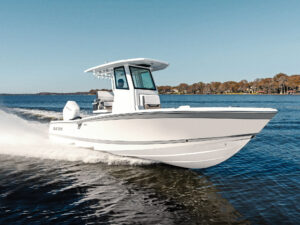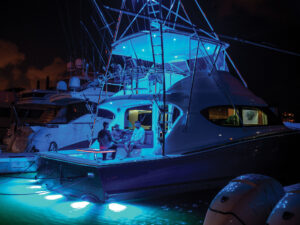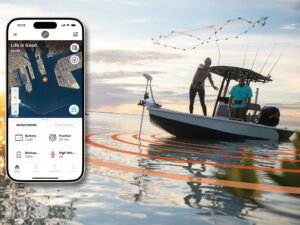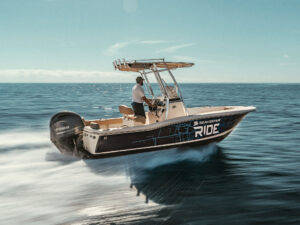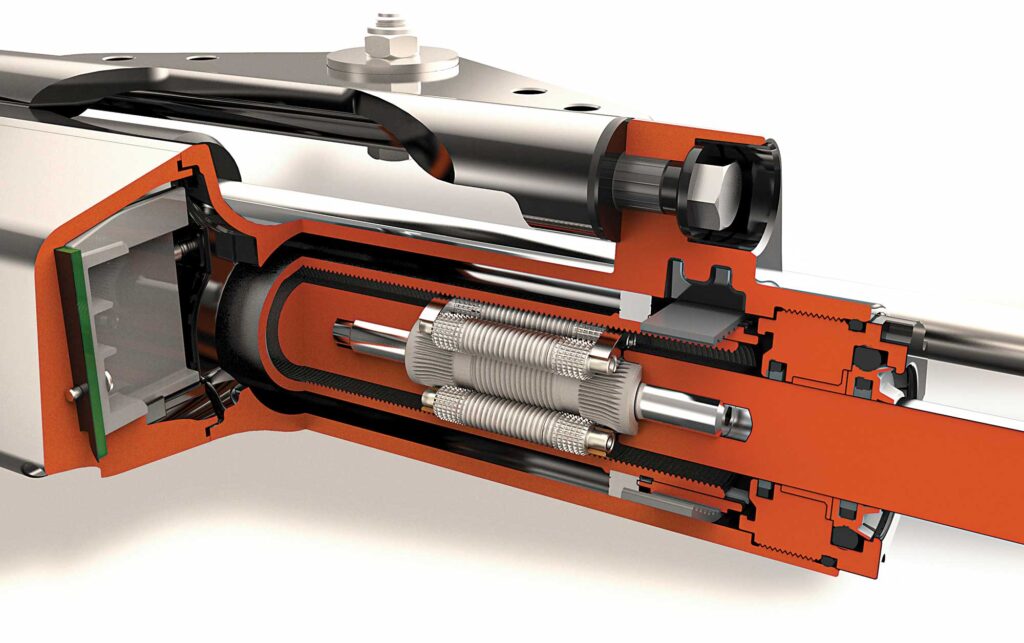
If you’ve been around saltwater fishing boats as long as me, you’ll remember when hydraulic steering systems for outboards first became popular in the early 1980s. My first one was on a 1986 21-foot center-console, and it vastly eased the effort to steer my 200 hp outboard versus cable steering.
Today, a similar revolution is taking place in the form of electric steering systems for outboards. With some systems already on the market today, electric steering may well displace hydraulic systems in the future as the best choice for outboard control.
That’s because electric steering offers many new advantages for boating anglers, not the least of which is eliminating the need for hydraulic fluid, which can create a mess and pollute waters if a steering hose, helm, actuator or other component springs a leak.
In much the same way hydraulic steering provides easier steering than mechanical-cable systems, electric systems further reduce the effort needed to turn the steering wheel. It is fingertip-easy; so easy that most systems enable special system programming to adjust the wheel resistance and lock-to-lock turning ratio to help prevent turns that are too sharp at speed.
Reduced rigging clutter is yet another advantage of electric steering because there are no hydraulic hoses or stiff steering cables to route separately from the helm to the stern and connect to the engine outside the main rigging tube. With the integrated electric steering systems on the big Mercury and Yamaha outboards, for example, there is just one electrical cable, and it is contained within the main rigging tube, hidden inside with the main engine harness and fuel line—super clean.
Read Next: Digital Electric Steering for Outboards
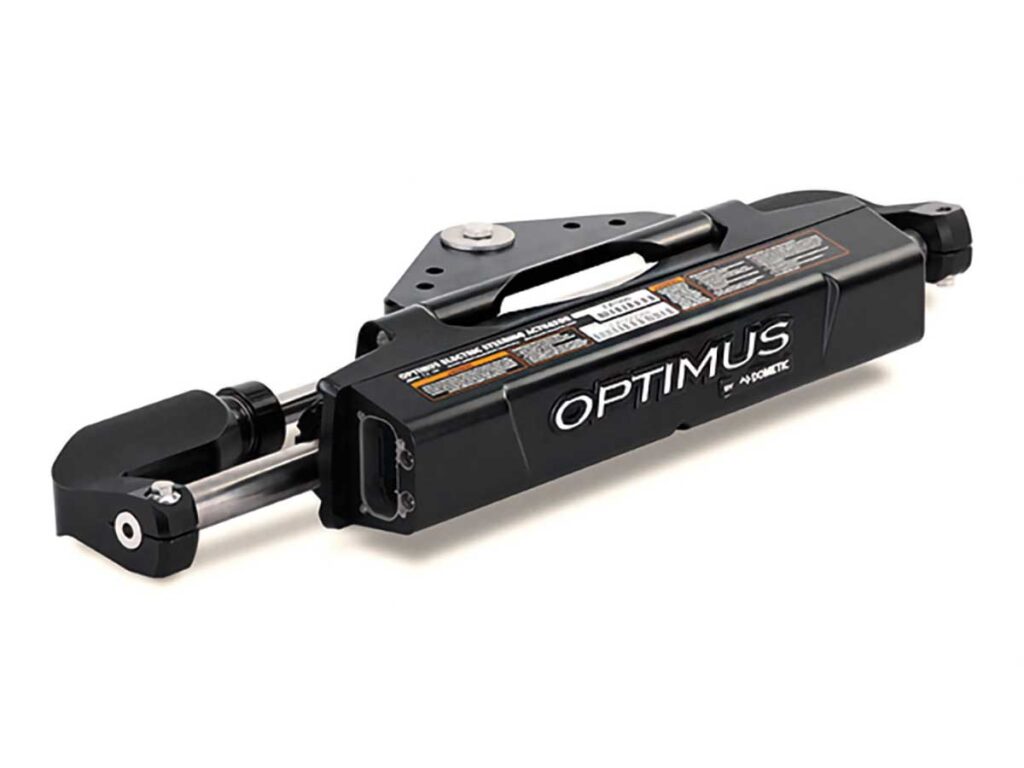
An electric steering system also enhances integration with ancillary outboard control systems, including joystick steering and autopilot functions. This is one of the big reasons why Mercury and Yamaha have incorporated electric steering into their large outboards because they can more simply and directly network these systems versus using an electrohydraulic power-assist-steering setup.
Electric steering can be added to an existing outboard of virtually any brand thanks to the Dometic Optimus outboard electric steering actuator. This all-electric system is easily installed by a qualified dealer, and includes speed-sensitive lock-to-lock turns to help ensure safe steering. It also offers built-in functionality with Dometic’s ancillary outboard control systems, including the SeaWays autopilot, Optimus 360 joystick control, and SeaStation GPS virtual anchoring system.
Dometic also offers the SeaStar Xtreme Power Assist (XPA) electric power-assist system for outboards using existing SeaStar rack or rotary cable steering. It installs in less than an hour and results in the same fingertip ease as other electric steering systems, yet does not increase the load on a mechanical helm or cable. XPA fills a niche for smaller outboards in the boating market from 90 to 200 hp that may not be suitable for an all-electric steering system.
With all of these emerging electric-outboard steering systems, a question arises: Why now? What major technology is driving these steering systems of the future? The answer is the development and miniaturization of high-speed, high-torque, efficient brushless DC electric motors. To give you an idea of how compact these new-age motors have become, the brushless motor in the Dometic all-electric actuator measures just 4-by-2 inches.
Some of this technology was borrowed from the automotive industry, but Dometic and others have spent considerable R&D to engineer and build systems specifically to operate reliably and safely amid the rigors of the marine environment while handling the heavy steering loads generated by big, high-horsepower outboards of today and tomorrow.

